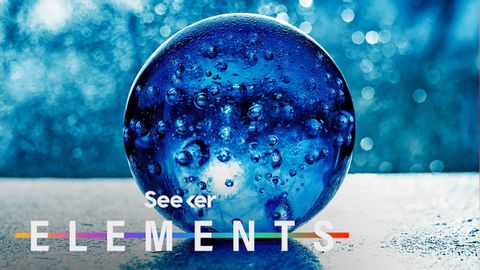科學家剛剛證明了 "液體玻璃 "的存在。 (Scientists Just Proved the Existence of ‘Liquid Glass’)
 沒有此條件下的單字
沒有此條件下的單字- n. (c./u.)串;束;一群人
- v.t.使成一串
- v.t./i.打褶
US /məˈtɪriəl/
・
UK /məˈtɪəriəl/
- n. (c./u.)布料;素材;資料;材料;物質
- adj.重要的;物質的
- v.i.是重要的
- n. (u.)物質
- n.件事情;問題;原因
US /ˈfæsəˌnetɪŋ/
・
UK /ˈfæsɪneɪtɪŋ/
- v.t.吸引人的;使人神魂顛倒的;(用眼神等)迷住
- adj.迷人的;吸引人的
- n. (u.)魅力
